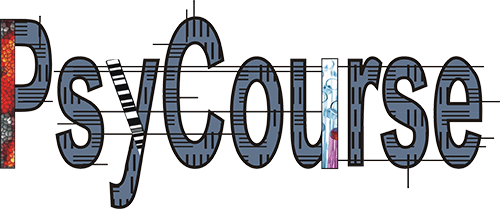2024-07-22
086_ Development of a multivariable prediction model of recovery in schizophrenia
Research Question and Aims
The study builds on a previous umbrella review of putative predictors of outcomes across mental disorders, and aims to investigate whether, and to what extent, a literature-informed set of candidate predictors can build a valid prediction model of recovery in those with schizophrenia spectrum disorder. The PsyCourse dataset provides a unique opportunity to analyze and compare the effects of all these factors within a single model. A better understanding of the factors influencing the recovery and remission(s) in patients with schizophrenia could improve both treatment and diagnosis of psychosis.
Analytic Plan
Starting from a set of predictors (see below), a Bayesian adaptive sampling procedure will be selected to explore which specific set (including potential interactions) may produce the best fitting model to data. Once the model will be identified, a series of multiple linear regressions will be used. Moreover, considering the longitudinal nature of the dependent variable(s), multiple-waves and multigroup structural equation models will be used to assess if the influence of each predictor (and/or their interactions) may change over time. Finally, clustering methods (such as exploratory graph analysis), will be used to define potential profiles of the respondents. Such profiles will be used to assess potential differences in recovery. To enhance internal validity of the results, the cited models will be tested on a subsamples of data, to get a first set of estimates. Such estimates will be used to conduct power analysis studies, through simulations. Based on the results, the initial models will be tested on the remaining sample. Results will be posted on open repositories.
Dependent variable: Recovery of patients in the spectrum of schizophrenia is operationalized as global functioning (Yu et al., 2020), stability of the symptoms/minimum symptom severity plus improved social, educational or vocational attainment (Catalan et al., 2021). Remission of patients in the spectrum of schizophrenia is operationalized as stability of the symptoms and/or minimum symptom severity for at least 6 months according to the RSWG remission criteria (Andreasen et al., 2005; Catalan et al., 2021). Independent variables composing the model: Candidate predictors include: psychotic symptoms (both positive and negative) along with their global severity and frequency, duration of the untreated illness and medication adherence, presence of depressive symptoms, as well as quality of life and functioning of the patients. Additionally, the impact of drug, tobacco, and alcohol consumption, as well as the presence of comorbid conditions such as migraines, epilepsy, and diabetes, will be considered. Finally, the sex, age, education level and marital status of the subjects will be taken into account.
Resources needed
v1_id
v1_sex
v1_yob
v1_school
v1_prof_dgr
v1_ed_status
v1_age_1st_inpat_trm
v1_dur_illness
v1_1st_ep
v1_tms_daypat_outpat_trm
v1_cat_daypat_outpat_trm
v1_fam_hist
v1_height
v1_chol_trig
v1_hyperten
v1_ang_pec
v1_heart_att
v1_stroke
v1_diabetes
v1_hyperthy
v1_hypothy
v1_osteopor
v1_asthma
v1_copd
v1_allerg
v1_neuroder
v1_psoriasis
v1_autoimm
v1_cancer
v1_stom_ulc
v1_kid_fail
v1_stone
v1_epilepsy
v1_migraine
v1_parkinson
v1_liv_cir_inf
v1_tbi
v1_beh
v1_eyear
v1_inf
v1_ever_smkd
v1_age_smk
v1_alc_pst12_mths
v1_evr_ill_drg
v1_sti_cat_evr
v1_can_cat_evr
v1_opi_cat_evr
v1_kok_cat_evr
v1_hal_cat_evr
v1_inh_cat_evr
v1_tra_cat_evr
v1_var_cat_evr
v1_scid_dsm_dx
v1_scid_dsm_dx_cat
v1_scid_ever_halls
v1_scid_ever_delus
v1_scid_ever_psyc
v1_scid_age_fst_psyc
v1_scid_yr_fst_psyc
v1_nrpsy_mwtb
alc_5orm
Antidepressants
Antipsychotics
bdi2_sum
bmi
cgi_c
cgi_s
clin_fst_ill_ep_dur
clin_fst_ill_ep_hsp_dur
clin_fst_ill_ep_hsp
clin_fst_ill_ep_med_chg
clin_fst_ill_ep_oth_end
clin_fst_ill_ep_othr
clin_fst_ill_ep_psy
clin_fst_ill_ep_slf_end
clin_fst_ill_ep_suic
clin_fst_ill_ep_symp_wrs
clin_ill_ep_snc_lst
clin_sec_ill_ep_dur
clin_sec_ill_ep_hsp_dur
clin_sec_ill_ep_hsp
clin_sec_ill_ep_med_chg
clin_sec_ill_ep_oth_end
clin_sec_ill_ep_othr
clin_sec_ill_ep_psy
clin_sec_ill_ep_slf_end
clin_sec_ill_ep_suic
clin_sec_ill_ep_symp_wrs
gaf
idsc_itm1
idsc_itm10
idsc_itm11
idsc_itm12
idsc_itm13
idsc_itm14
idsc_itm15
idsc_itm16
idsc_itm17
idsc_itm18
idsc_itm19
idsc_itm2
idsc_itm20
idsc_itm21
idsc_itm22
idsc_itm23
idsc_itm24
idsc_itm25
idsc_itm26
idsc_itm27
idsc_itm28
idsc_itm29
idsc_itm3
idsc_itm30
idsc_itm4
idsc_itm5
idsc_itm6
idsc_itm7
idsc_itm8
idsc_itm9
idsc_itm9a
idsc_itm9b
idsc_sum
marital_stat
med_pst_sx_mths
med_pst_wk
Mood_stabilizers
no_cig
nrpsy_dg_sym
nrpsy_dgt_sp_bck
nrpsy_dgt_sp_frw
nrpsy_tmt_A_err
nrpsy_tmt_A_rt
nrpsy_tmt_B_err
nrpsy_tmt_B_rt
nrpsy_vlmt_check
nrpsy_vlmt_corr
nrpsy_vlmt_lss_d
nrpsy_vlmt_lss_t
nrpsy_vlmt_rec
Other_psychiatric
panss_g1
panss_g10
panss_g11
panss_g12
panss_g13
panss_g14
panss_g15
panss_g16
panss_g2
panss_g3
panss_g4
panss_g5
panss_g6
panss_g7
panss_g8
panss_g9
panss_n1
panss_n2
panss_n3
panss_n4
panss_n5
panss_n6
panss_n7
panss_p1
panss_p2
panss_p3
panss_p4
panss_p5
panss_p6
panss_p7
panss_sum_gen
panss_sum_neg
panss_sum_pos
panss_sum_tot
Tranquilizers
whoqol_dom_env
whoqol_dom_glob
whoqol_dom_phys
whoqol_dom_psy
whoqol_dom_soc
whoqol_itm1
whoqol_itm10
whoqol_itm11
whoqol_itm12
whoqol_itm13
whoqol_itm14
whoqol_itm15
whoqol_itm16
whoqol_itm17
whoqol_itm18
whoqol_itm19
whoqol_itm2
whoqol_itm20
whoqol_itm21
whoqol_itm22
whoqol_itm23
whoqol_itm24
whoqol_itm25
whoqol_itm26
whoqol_itm3
whoqol_itm4
whoqol_itm5
whoqol_itm6
whoqol_itm7
whoqol_itm8
whoqol_itm9
